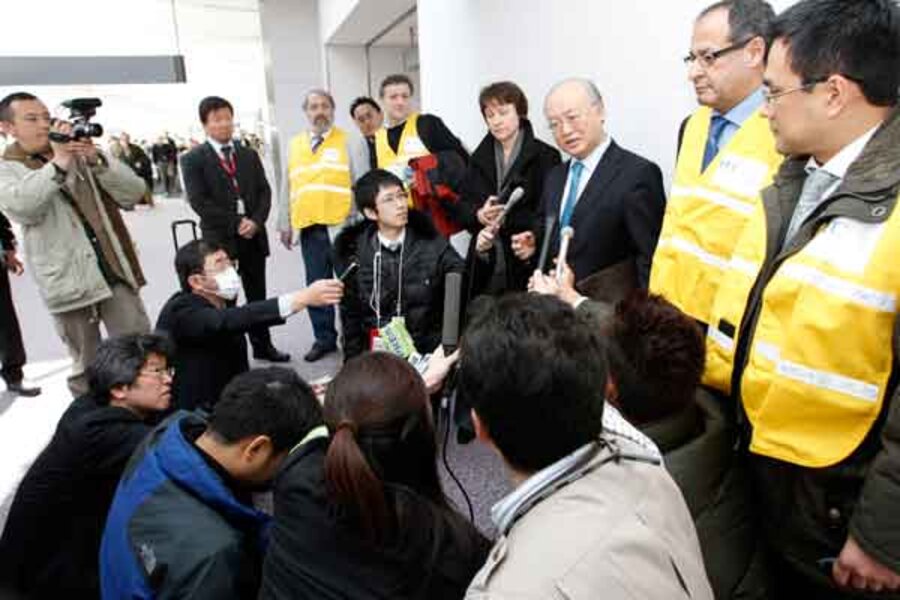In nuclear crisis, an information dilemma
Loading...
One of the most difficult tasks a leader can face is deciding when, how, and how much information should be shared with the public. Everybody applauds the idea of transparency and openness. But there's always the possibility of spreading fear and causing panic.
The Japanese government, which is fighting to stabilize the crippled reactors at Fukushima, is also struggling to cope with the aftermath of last week's epic tsunami. The economy is reeling. A massive movement of people out of Tokyo because of radiation fears would only worsen things. But that has to be weighed against the actual dangers posed by radiation.
The Obama administration, meanwhile, appears to have concluded that even heroic efforts will not save the nuclear facilities. It is urging Americans to move far away. The US military is beginning to transport the families of service members out of the country.
That may be the right precaution to take for Americans. The Japanese have no such choice.





